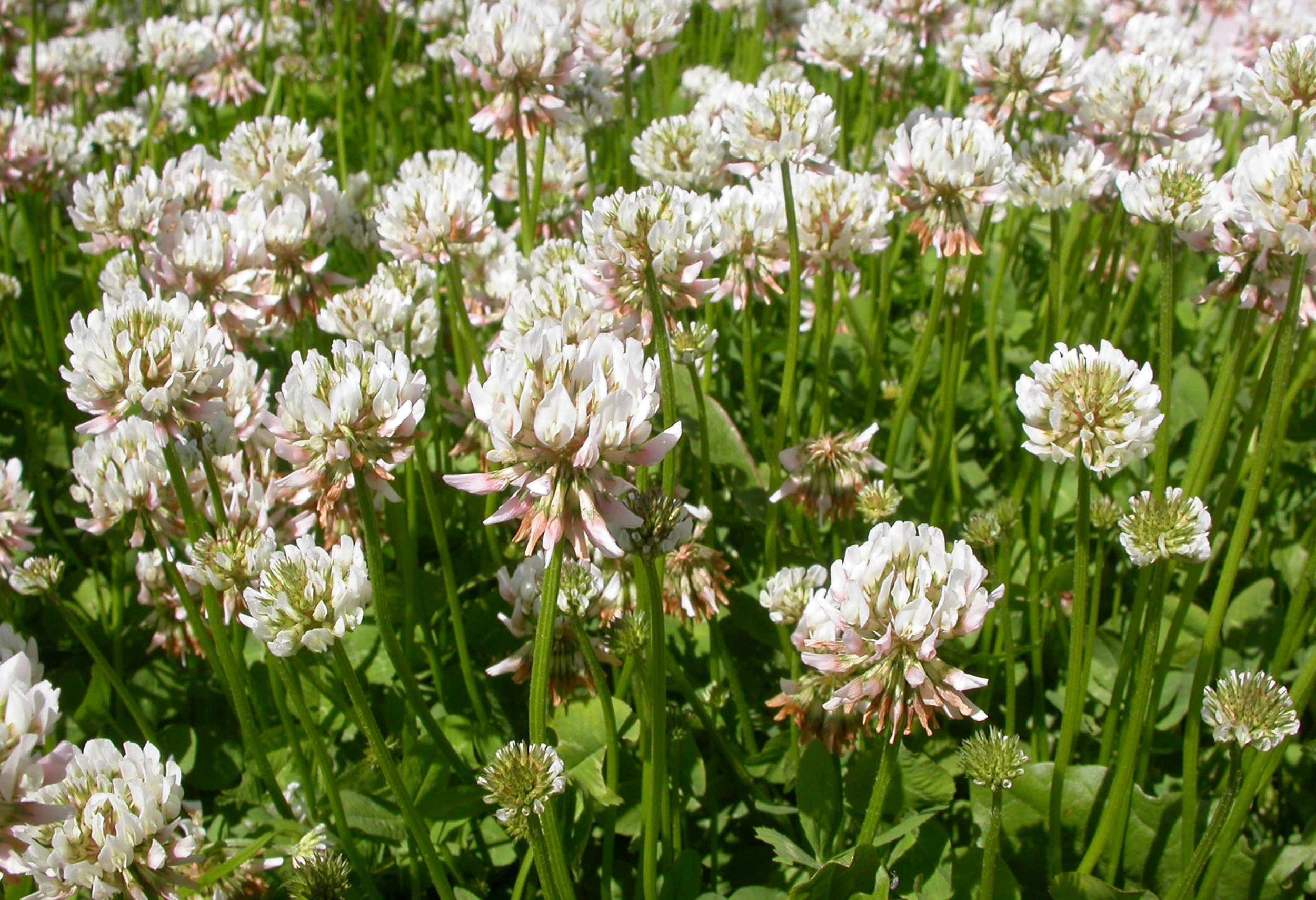What is a Weed?
Common dandelion (Taraxacum officinale) Photo by Σ64 - CC BY 3.0
How can a little yellow flower bring both joy and anxiety each spring?
Depending on the person, the common dandelion (Taraxacum officinale) can represent a critical source of food for pollinators, a blemish on a perfect lawn or a delicious salad ingredient. But even dandelion lovers feel differently when this plant pops up in their well-manicured garden. Then dandelions become… weeds.
So what is a weed? A “plant growing in the wrong place” is a widely cited definition, but it all depends on the plant and the person. Gardeners may love a plant that natural area stewards see as a threat, while farmers and caretakers of perfect turfgrass lawns may see anything but their crops as a weed.
Let’s look at some examples…
White Clover (Trifolium repens). Photo by Matt Lavin - CC BY 3.0
White Clover (Trifolium repens)
White clover—the common dandelion’s partner in lawn crime—is a nonnative perennial that forms patches by rooting as it sprawls along the ground. Introduced to North America as both a forage crop and cover crop, this clover can be found almost anywhere with at least a little bit of sun and a little bit of soil.
White clover was actually included in lawn seed mixes until the 1950s, until advances in herbicides lead to changing attitudes about our lawns.
Our take: Let it live in your lawn. White clover tolerates drought (less watering), can outcompete other weeds and provides an important source of food for many pollinators in the spring. It also fixes nitrogen, giving your turf grass a free source of fertilizer.
Hairy Galinsoga (Galinsoga quadriradiata). Photo by Wasp32 - CC BY 4.0
Hairy Galinsoga (Galinsoga quadriradiata)
Also called shaggy soldiers or common quickweed, this annual nonnative plant can spread quickly in gardens, agricultural fields and urban areas (including poking through cracks in pavement). While not considered invasive in the Chicago area, it is considered a weed even in its native range and can cause major reductions in crop yields.
If left alone, a single plant can produce up to 7,500 seeds, leading to quick infestations and multiple generations in a single growing season.
Our take: Learn to identify this plant and pull it as soon as you see it. Discard it in an active compost pile or the garbage.
Common Blue Violet (Viola sororia).
Common Blue Violet (Viola sororia)
Schoolchildren picked the violet (they didn’t specify which one…) as the official flower of Illinois over 100 years ago, but that certainly hasn’t helped its reputation. Despite being native to the Chicago area, the common blue violet is dismissed as a weed when it pops up in yards and garden beds.
This small (under six inches) plant spreads by both seed and rhizomes and is happiest (and weediest) in moist soil and light shade. This violet’s violet-colored flowers feature five petals, including a lower petal designed to accommodate visiting insects.
Our take: Let this native plant live in your lawn and in gaps in your garden. It thrives where turfgrass struggles, makes excellent ground cover in garden beds and fritillary butterflies use common blue violets as a host.
Garlic Mustard (Alliaria petiolata). Photo by R.A.Nonenmacher - CC BY-SA 4.0
Garlic Mustard (Alliaria petiolata)
Brought to the United States as a food plant, garlic mustard is now highly invasive in our native woodlands, and can show up in yards, parks and distrubed areas as well.
This biennial plant produces a low rosette in the first year and stays green through winter. In the second year, it produces small white flowers on short stalks. The average plant produces over 600 seeds allowing woodland populations to spread an average of 20 feet per year if left unchecked.
Our take: Don’t let this invasive plant get a foothold in your garden. While easy to identify and pull by hand in the spring, missing just one plant or seed pod can prolong its stay in your garden for years. Make sure to dispose of the plants in a sealed bag—they’ll try to produce seed even after you pull them. Bonus: Volunteer in a local forest preserve or other natural area to help control garlic mustard and other invasive species.
So what did we learn? It’s complicated… Even as the IUCN declares the monarch endangered, many people still consider common milkweed (one of its favorite milkweed hosts) a weed.
With people moving plants all over the world (see: colonization and globalization) and even finding some of their local native plants too unruly for their garden, we’ll probably never have a shared definition. But next time you reach to pull a “weed” from your lawn or garden… maybe think twice.





